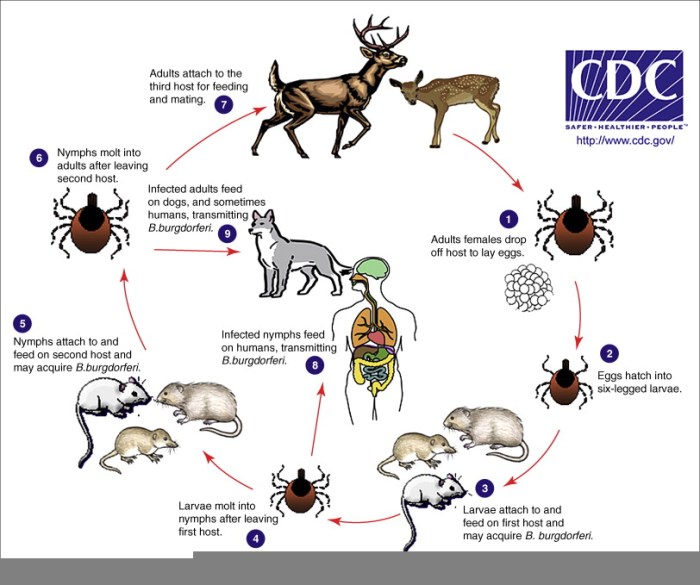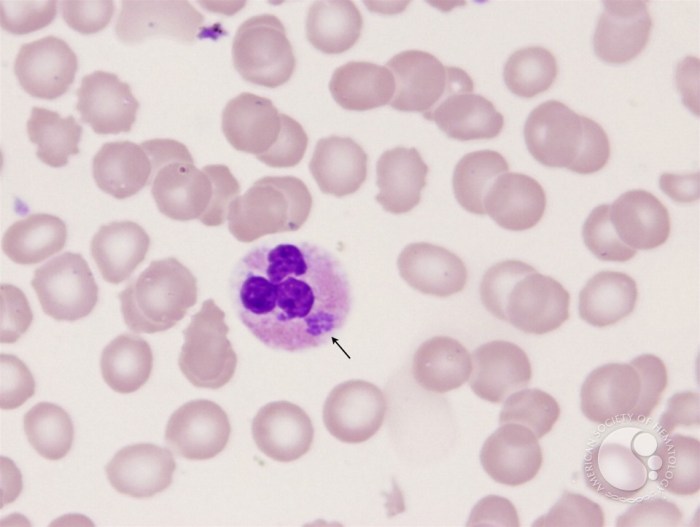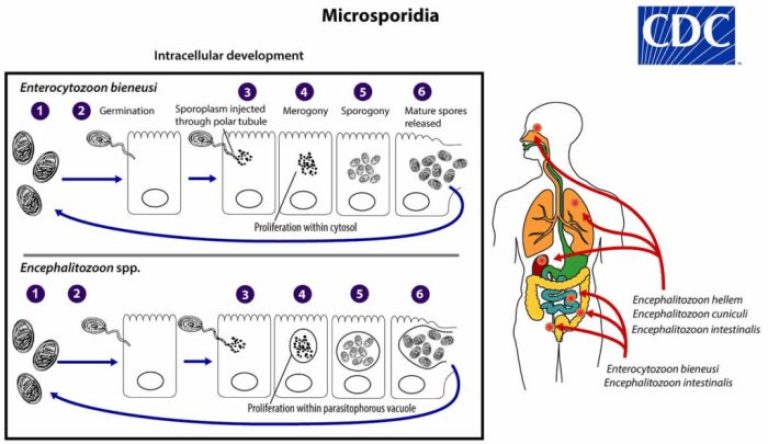Ehrichiosis way of travel – Ehrlichiosis way of travel isn’t just about visiting exotic locales; it’s about understanding the hidden risks lurking in nature. This disease, spread primarily through tick bites, has a global reach, influenced by climate change, human activity, and the very environment we inhabit. Understanding how Ehrlichiosis spreads and how to protect yourself is crucial for safe and healthy travel, especially to areas with higher tick populations.
We’ll explore the various tick species responsible for transmission, their life cycles, and their geographic distribution. We’ll also delve into how environmental factors, human activities, and even climate change impact the spread of this disease. Finally, we’ll equip you with practical prevention strategies and travel advisories to minimize your risk.
Ehrlichiosis Transmission Vectors

Ehrlichiosis, a tick-borne illness, is transmitted through the bite of infected ticks. Understanding the species involved, their life cycles, and geographic distribution is crucial for effective prevention and control of this disease. Several tick species are implicated in Ehrlichia transmission, each with its own characteristics and preferred hosts.
Tick Species Involved in Ehrlichiosis Transmission
Several species of ticks are known vectors for Ehrlichia bacteria, the causative agent of ehrlichiosis. The most significant vectors vary geographically, reflecting the diverse habitats and host animals these ticks inhabit. The primary genera involved include
- Amblyomma*,
- Ixodes*, and
- Rhipicephalus*. Species within these genera show considerable variation in their preferred hosts and geographical ranges.
Tick Life Cycle and Ehrlichiosis Transmission
Ticks undergo a four-stage life cycle: egg, larva, nymph, and adult. Transmission of Ehrlichia typically occurs when an infected tick feeds on a vertebrate host. The bacteria reside within the tick’s salivary glands. During a blood meal, the infected saliva is injected into the host, allowing the bacteria to enter the bloodstream. The infectious period varies among tick species and stages of development.
For example, nymphs are often more efficient transmitters than adult ticks due to their longer feeding times.
Geographical Distribution of Ehrlichiosis Vectors, Ehrichiosis way of travel
The geographic distribution of Ehrlichia-carrying ticks is highly variable and depends on factors such as climate, vegetation, and the presence of suitable host animals. For example,
- Amblyomma americanum* (the lone star tick) is prevalent in the eastern and central United States, while
- Ixodes scapularis* (the blacklegged tick) is found throughout the eastern United States, parts of Canada, and some areas of Europe.
- Rhipicephalus sanguineus* (the brown dog tick) has a more global distribution, found in warmer climates worldwide. Understanding these geographic variations is vital for targeted prevention strategies.
Tick Species, Geographic Range, and Preferred Hosts
| Tick Species | Geographic Range | Preferred Hosts | Ehrlichia Species Transmitted (Examples) |
|---|---|---|---|
| Amblyomma americanum (Lone Star Tick) | Eastern and central United States | White-tailed deer, rodents, dogs | Ehrlichia chaffeensis, Ehrlichia ewingii |
| Ixodes scapularis (Blacklegged Tick) | Eastern United States, parts of Canada, Europe | White-tailed deer, rodents, birds | Ehrlichia muris, Anaplasma phagocytophilum (causes anaplasmosis, often co-infected) |
| Rhipicephalus sanguineus (Brown Dog Tick) | Worldwide (warmer climates) | Dogs, other canids, occasionally humans | Ehrlichia canis (primarily in dogs) |
| Ixodes ricinus (Sheep Tick) | Europe, parts of Asia | Various mammals, including livestock and humans | Ehrlichia phagocytophila |
Environmental Factors Influencing Ehrlichiosis Spread

Ehrlichiosis, a tick-borne illness, doesn’t exist in a vacuum. Its spread is intricately linked to environmental conditions, which influence both tick populations and human exposure. Understanding these environmental factors is crucial for effective prevention and control strategies. Changes in the environment, both natural and human-induced, can significantly impact the risk of Ehrlichiosis transmission.
Climate Change and Ehrlichiosis Incidence
Climate change is altering tick habitats and life cycles, leading to shifts in Ehrlichiosis incidence. Warmer temperatures and altered precipitation patterns extend the tick’s active season, increasing the opportunities for bites and disease transmission. For instance, milder winters can lead to higher tick survival rates, resulting in larger populations the following spring and summer. Similarly, increased rainfall can create more humid environments, ideal for tick breeding and survival.
These changes aren’t uniform globally; some regions might see increased risk, while others might experience decreased risk depending on specific climatic shifts. For example, studies have shown a correlation between warmer temperatures in certain regions and a rise in reported cases of Ehrlichiosis.
Habitat Fragmentation and Land Use Changes
Human activities, such as deforestation and urbanization, fragment natural habitats, creating edge effects that benefit some tick species. These fragmented landscapes often contain a mix of wooded and open areas, providing ideal breeding grounds and feeding sites for ticks. Changes in land use, such as the conversion of forests to agricultural land or residential areas, can also alter tick populations and their distribution.
Increased proximity between humans and tick-infested areas, due to habitat encroachment, elevates the risk of Ehrlichiosis transmission. For example, the expansion of suburban areas into previously forested regions can bring humans into closer contact with ticks and increase the risk of exposure.
Factors Increasing Tick Populations and Activity
Several environmental factors contribute to increased tick populations and activity. High humidity and moderate temperatures are optimal for tick survival and reproduction. Abundant wildlife hosts, such as deer and rodents, provide ticks with blood meals necessary for their life cycle. The presence of dense vegetation provides shelter and protection for ticks. Lack of natural predators further contributes to increased tick populations.
Finally, inadequate tick control measures in high-risk areas can exacerbate the problem. For instance, a region with a high deer population and a lack of effective deer tick control programs will likely experience higher tick densities and increased Ehrlichiosis risk.
Weather Patterns and Ehrlichiosis Risk
Weather patterns directly influence tick activity and, consequently, Ehrlichiosis risk. Warm, humid weather encourages tick activity, while cold, dry weather reduces it. Rainfall can also influence tick activity, with moderate rainfall potentially increasing humidity and creating favorable conditions for ticks. Severe weather events, such as droughts or floods, can have complex effects on tick populations, potentially leading to both increases or decreases depending on the specific event and its impact on the environment.
For example, a prolonged drought could reduce tick populations by limiting the availability of suitable habitats, while a heavy rainfall event could create ideal conditions for tick breeding. Predicting these weather-related fluctuations is vital for timely public health interventions.
Ehrlichiosis Prevention and Control Strategies
Protecting yourself from ehrlichiosis hinges on preventing tick bites. This involves a multi-pronged approach encompassing personal protective measures, habitat modification, and effective tick removal techniques. By understanding and implementing these strategies, you significantly reduce your risk of contracting this bacterial infection.
Preventing Tick Bites
Preventing tick bites is the most effective way to avoid ehrlichiosis. Ticks thrive in wooded and grassy areas, so understanding their behavior and taking precautions when in these environments is crucial. This involves a combination of protective clothing, repellents, and modifying the environment around your home to make it less hospitable to ticks.
- Clothing: Wear long sleeves, long pants tucked into socks, and closed-toe shoes when in tick-infested areas. Light-colored clothing makes ticks easier to spot.
- Repellents: Apply EPA-registered insect repellents containing DEET, picaridin, IR3535, or oil of lemon eucalyptus to exposed skin. Always follow the product label instructions carefully.
- Habitat Modification: Keep grass short, remove leaf litter and brush around your home, and create a barrier of gravel or wood chips between grassy areas and your house. This reduces tick habitats and limits their access to your living space.
Proper Tick Removal
If a tick does attach itself, removing it promptly and correctly is essential. Improper removal can increase the risk of disease transmission.
- Use Fine-Tipped Tweezers: Grasp the tick as close to the skin’s surface as possible with fine-tipped tweezers.
- Pull Upward Steadily: Pull upward with steady, even pressure. Avoid twisting or jerking the tick, as this can break off the mouthparts and leave them embedded in the skin.
- Clean the Bite Area: After removing the tick, thoroughly clean the bite area with soap and water.
- Save the Tick (Optional): If possible, save the removed tick in a sealed container or zip-lock bag. This can be helpful for identification if you develop symptoms.
Tick Control Measures for Homes and Outdoor Spaces
Controlling ticks requires a comprehensive strategy that targets both your home and surrounding outdoor areas. Different methods are effective in different environments.
- Home: Regularly vacuum and mop floors to remove any ticks that may have wandered indoors. Check pets for ticks after they’ve been outside.
- Outdoor Spaces: Applying tick control products to your lawn and garden can help reduce tick populations. These products may include insecticides or natural repellents. Always follow label instructions carefully and consider the environmental impact of any chemical treatments.
Ultimately, safe travel in Ehrlichiosis-prone regions requires awareness, preparation, and proactive measures. By understanding the intricate relationship between ticks, environment, and human activity, we can significantly reduce our risk of contracting this disease. Remember to check for ticks after spending time outdoors, use repellents, and seek medical attention if you develop symptoms. Travel safely, and travel smart!
Essential Questionnaire: Ehrichiosis Way Of Travel
What are the common symptoms of Ehrlichiosis?
Symptoms can vary but often include fever, headache, muscle aches, chills, and sometimes a rash. Seek medical attention if you suspect infection.
How long does it take for Ehrlichiosis symptoms to appear?
Symptoms typically appear 1-3 weeks after a tick bite, but this can vary.
Is Ehrlichiosis treatable?
Yes, Ehrlichiosis is treatable with antibiotics if diagnosed early. Prompt treatment is key to a full recovery.
Can Ehrlichiosis be prevented entirely?
While complete prevention is difficult, practicing preventative measures like wearing protective clothing, using insect repellent, and checking for ticks regularly significantly reduces your risk.
